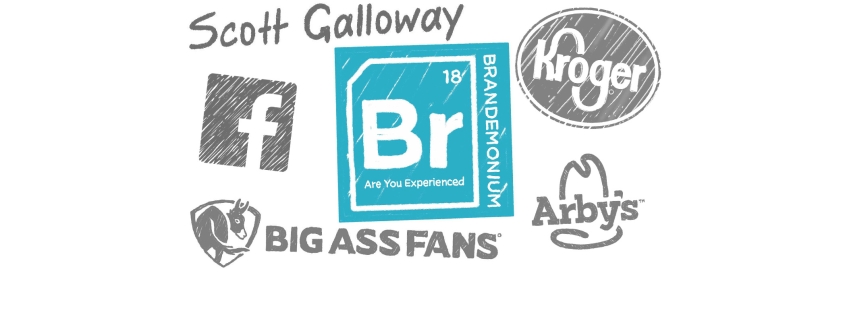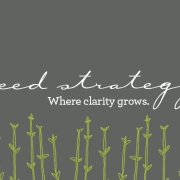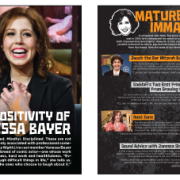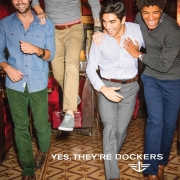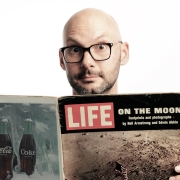Insights and Inspiration From Brandemonium 2018
From the impact of mobile devices, to the evolution of the shopper experience and the mastering of branding in today’s ultra-connected world, the Seed team collected a wealth of insight and inspiration from Brandemonium 2018. Here’s a recap of some of the many stellar presentations given by top-level experts that are guiding our industry.
Facebook
Keynote speaker Matty de Castro, Director of Global Marketing Solutions for Facebook, dove deep into marketing to the mobile consumer—where it’s important to launch, test, iterate and measure everything.
He spoke at length about how mobile has caused monumental shifts in the marketing industry. Before, it was all about mass reach, but now the focus has shifted to optimized reach. In the past, advertisers could assume they’d automatically get consumers’ attention, but today they have to work hard to earn it.
With consumers now firmly in control (and with unlimited content available to them), there is incredible value in effectively curating content with on-demand functionality.
Scott Galloway
The presentation on The State of Retail and Commerce 2018 by Scott Galloway, professor at NYU Stern School of Business and author of New York Times bestseller, “The Four”, was an absolute showstopper. His passion for helping smaller businesses thrive in the world of big technology was on full display.
In Scott’s book, he speaks about what he calls The Four Horsemen. Each of the horsemen (Apple, Facebook, Google and Amazon) represents a company that has a virtual monopoly in its respective industry. During his presentation, Scott said that if he were to write a sequel to his book, it would be called “The One,” because Amazon has surged to the front of the pack in the last few years.
He emphasized how Amazon is so powerful that it immediately becomes a huge player in any industry the company jumps into. He went on to say that “Amazon can do Jedi mind tricks” in arenas they have never played in before. As an example, he talked about how leading grocery chains were convinced that e-commerce wasn’t relevant to their industry then, just a short while later, Amazon purchased Whole Foods and many grocers lost significant stock value. He also noted that Amazon is now the second largest producer of original content and is expected to spend around five billion dollars on content creation this year.
So how can other businesses fight back? An omni-channel approach can help. Scott noted how Wal-Mart has made huge strides in battling Amazon, bouncing back with super strong omni-channel initiatives—like Click and Collect. This has convinced Galloway that Wal-Mart and others still have a fighting chance against the digital behemoth.
Another approach is to beat Amazon at its own game. Amazon’s success is based on leveraging RUNDLE (reoccurring revenue bundles). This business model builds a monogamous relationship with the consumer. Other trustworthy brands could easily follow suit. For example, Nike—a brand that has created strong relationships with its consumers—could impact consumer behavior by creating a branded experience in the gym, food or hospitality industries.
Kroger
Gill Phipps, Vice President of Branding and Marketing + Our Brands at Kroger, along with Alex Coolidge from the Cincinnati Enquirer participated in a panel-style discussion called, “Knock-Offs to Knock-Outs.” The talk centered on how Kroger built its brands from typical generic store brands to high-level premium brands that consumers actively seek out.
Creating CPG brands within a traditional retail grocer model is no easy task. Kroger was looking to move from commodity to brand(s). It was about establishing something that shifted the perception from generic and low cost (think aluminum cans wrapped with a white label and bold black type that simply reads “Peaches) to products that people crave and feel good about sharing with their friends and families.
They key to success? Offering a range of differentiated options. But beyond that—offering those options with the quality and price point consumers are looking for. Simple Truth and Private Selection launched as complementary counterparts to the existing Kroger Brand in January 2013—each with different positions to reach the diverse needs of Kroger’s consumers. The Kroger Brand is described as “Where Awesome Meets Affordable,” while Private Selection centers on “Elevate Everything” and Simple Truth is all about being “Proud of What’s Not in Our Foods” (natural, “free-from” choices at an affordable price).
Powered by Kroger Brand, Simple Truth and Private Selection, Kroger’s own brands have helped grow its portfolio by 39%. In fact, the Private Selection and Simple Truth brands have grown so much that they are large enough combined to be a Fortune 500 company.
Big Ass Fans
Big Ass Fans. The brand name is enough to make you want to learn more. And, in fact, the name was a focus of founder Carey Smith’s presentation. Smith gives the name credit for much of the company’s early success with connecting with its core audience. The irreverent, yet brilliant name does a lot of heavy lifting because it is so memorable and clearly represents the company’s brand positioning and niche in the market. Originally named HVLS Fans, Smith changed the name after a number of customers called and asked if they were the company that made those “big ass fans.” The company has drawn criticism from groups around the country, but the name has stuck—helping achieve over $200MM in annual growth.
Another factor in the company’s success has been Smith’s belief in the power of his people. He created a physical and metaphorical “kitchen” where employees are encouraged to tinker with products, run experiments and show what they can do. Smith attributes The Kitchen with playing a significant role in helping put Big Ass Fans in position to achieve its ambitious goals.
Arby’s
Arby’s CMO, Jim Taylor spoke about the importance of making sure that your brand remains authentic and that you leverage what makes it unique. At Seed, we often encounter instances where clients become laser-focused on keeping up with the competition, even if it means compromising what they stand for. Taylor’s talk (and Arby’s proven success story) was a good reminder to not become so distracted by what others are doing that you lose focus of your own brand. His perspective on product innovation—“first, best, only”—has helped Arby’s avoid the trap of becoming an inauthentic me-too brand and has lead the chain to try some more “out there” offerings (venison, fried turkey, pork belly, etc.) that proved to be super successful.
Did you make it to Brandemonium? If so, what inspiration or big “ah-has” did you take away from the conference? I’d love to hear from you—comment below or connect with me on LinkedIn.
Editor’s Note: Special thanks to Jeff Johns, Jamie Schleicher, Eric Scheer, Sean Smyth and Emily May for their contributions to this article.
Adam Siegel is the Editor of The Accelerator and a Creative Director at Seed Strategy where he draws upon his diverse experience in advertising, research and innovation to craft breakthrough creative and winning concept copy.
Connect with us! Follow Seed Strategy on our LinkedIn, Twitter, Facebook and Instagram pages.

